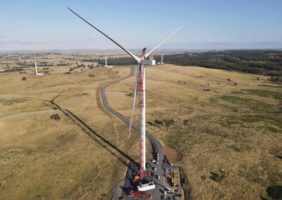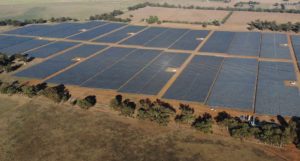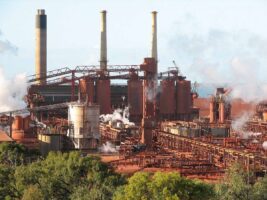Andrew Forrest’s Fortescue group is has announced new plans to produce green steel on a commercial scale – and without burning fossil fuels.
Fortescue has signed a memorandum of understanding with Austria’s only crude steel producer, voestalpine, Mitsubishi Corp and Primetals Technologies aimed at designing and engineering an industrial-scale prototype plant with a new process for net-zero-emission ironmaking.
The partners also plan to investigate the implementation and operation of the plant, which will be located near the company’s headquarters in Linz, Austria.
Steelmakers are testing methods of producing steel without releasing carbon dioxide by using electricity to separate iron from its ore, in the hope of finding a path to cleaning up one of the world’s worst industries for greenhouse gas emissions.
Fortescue green technologies offshoot FFI is already investigating ways to make green steel in Asia in collaboration with Indonesia’s GRP, one of that country’s largest private steelmakers.
The new ironmaking process being tested in Austria will be based on Primetals Technologies’ HYFOR (hydrogen fine ore reduction) and smelter solutions technology.
The partners claim HYFOR is the world’s first direct reduction process for iron ore fines that will not require any agglomeration steps, like sintering or pelletizing – a process based on patents by British engineer William Bessemer in the 1850s.
A pilot plant has been in operation since the end of 2021, and, according to FFI, Primetals has run numerous successful test campaigns, including successful trials on Fortescue’s Pilbara-mined iron ore.
Fortescue’s main responsibility is to provide knowledge about iron ore quality and preparation. In addition, it will supply various iron ore types to the pilot.
“Global demand for iron ore and steel will remain strong for years to come, but we need cleaner, greener industry powered by green energy to eliminate emissions,” FFI CEO Mark Hutchinson said in a statement.
The project planning phase will be used to design an industrial-scale prototype plant with a capacity of between three to five tons of green hot metal per hour. FFI says it is the first technical solution to link a hydrogen-based direct reduction plant for iron ore fines with a smelter.
“voestalpine has a clear plan to decarbonize steel production with the greentec steel program. An important first step is the incremental shift from the blast furnace route to a hybrid-electric steel pathway from 2027,” voestalpine steel division head Hubert Zajicek said.
“Over the long term, our mission is carbon neutral steel production using green hydrogen, for which we are already undertaking intensive research into promising breakthrough technologies,” he said.
Hydrogen is a key part of the European Union’s plan to reach net zero greenhouse gas emissions by 2050.
The hydrogen used in the new plant will mainly come from Austrian renewable energy producer Verbund, which operates a proton exchange membrane (PEM) electrolyzer named H2Future.
The plant is the world’s largest of its kind used for steelmaking, with a capacity exceeding 6MW, according to Fortescue










